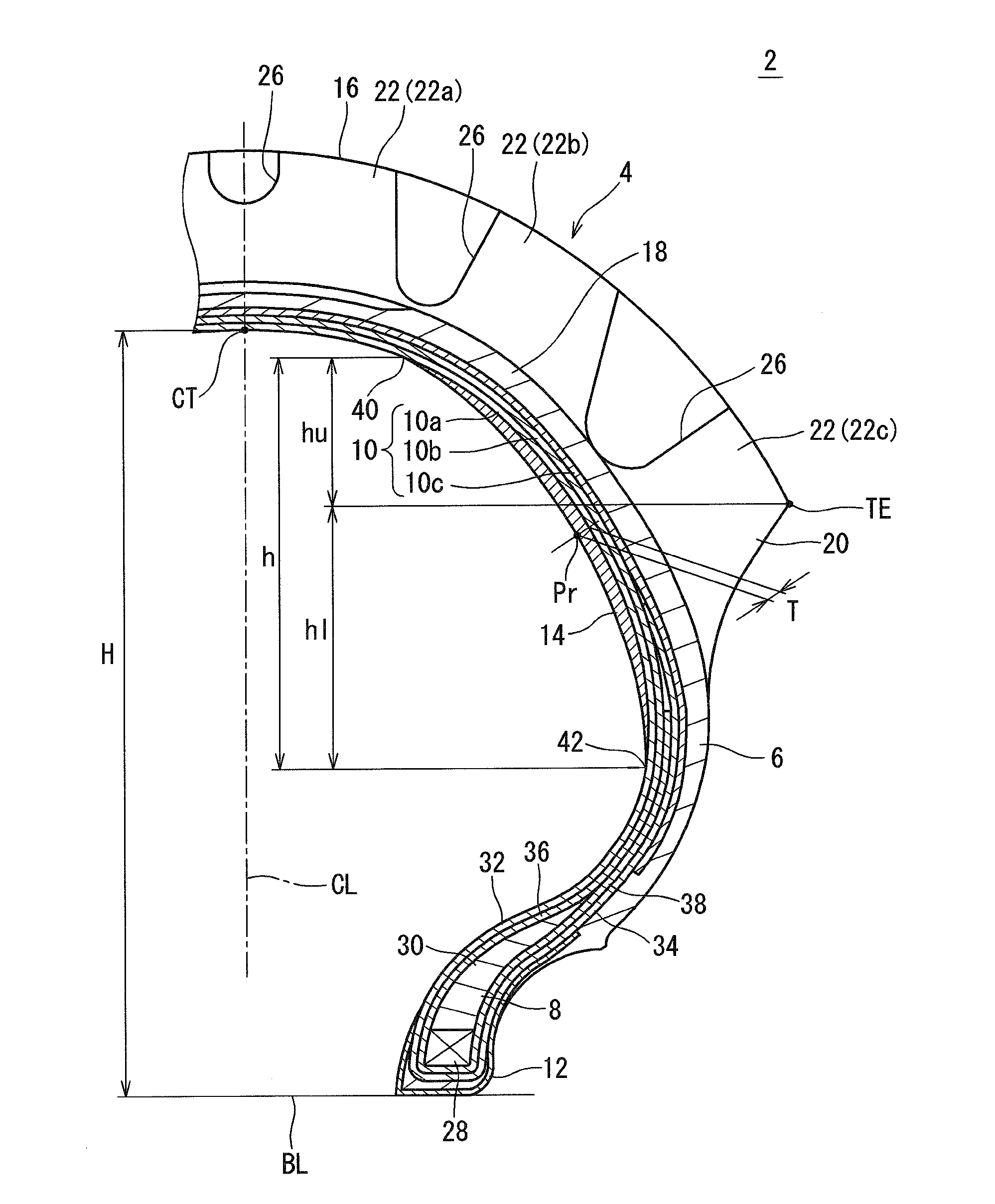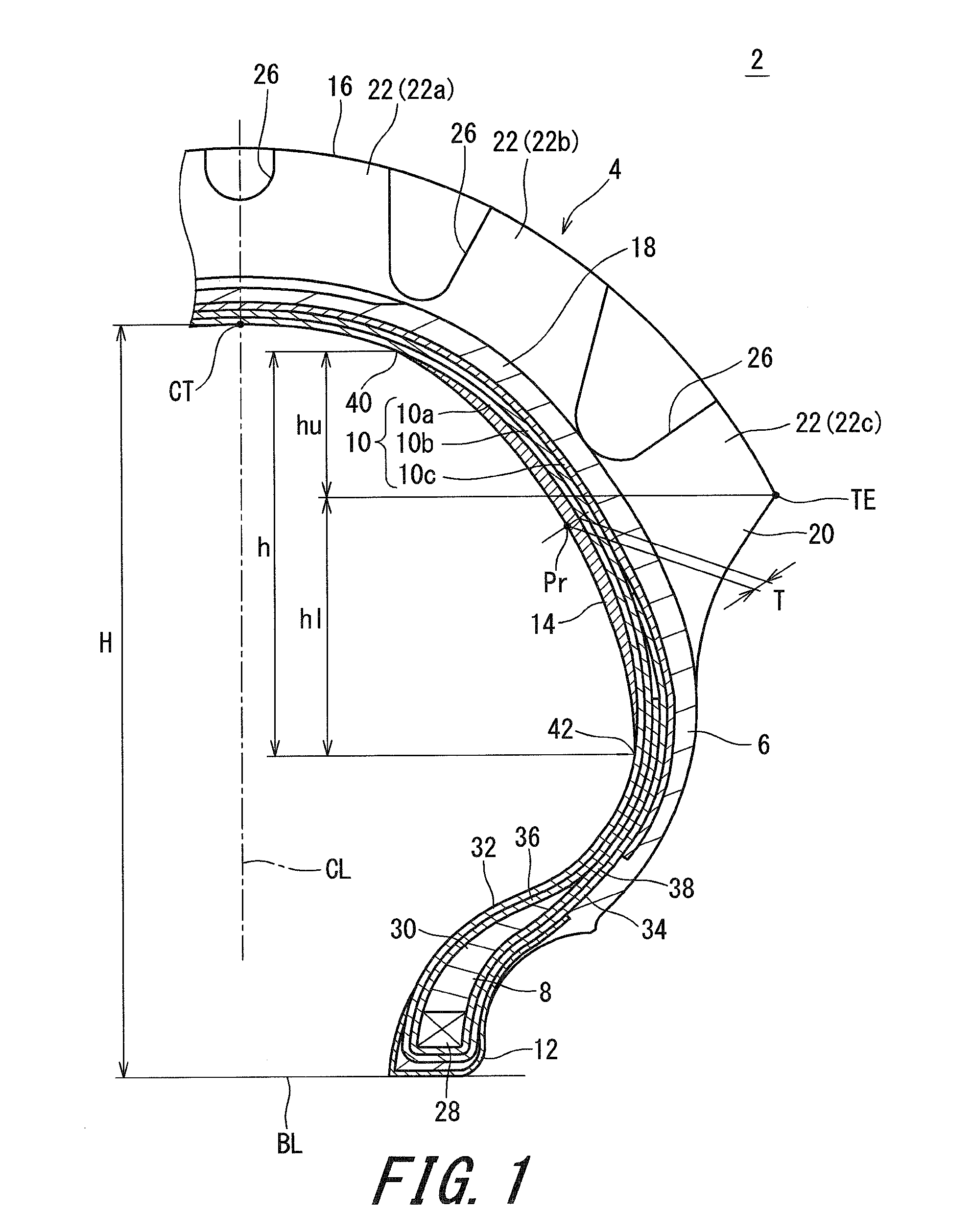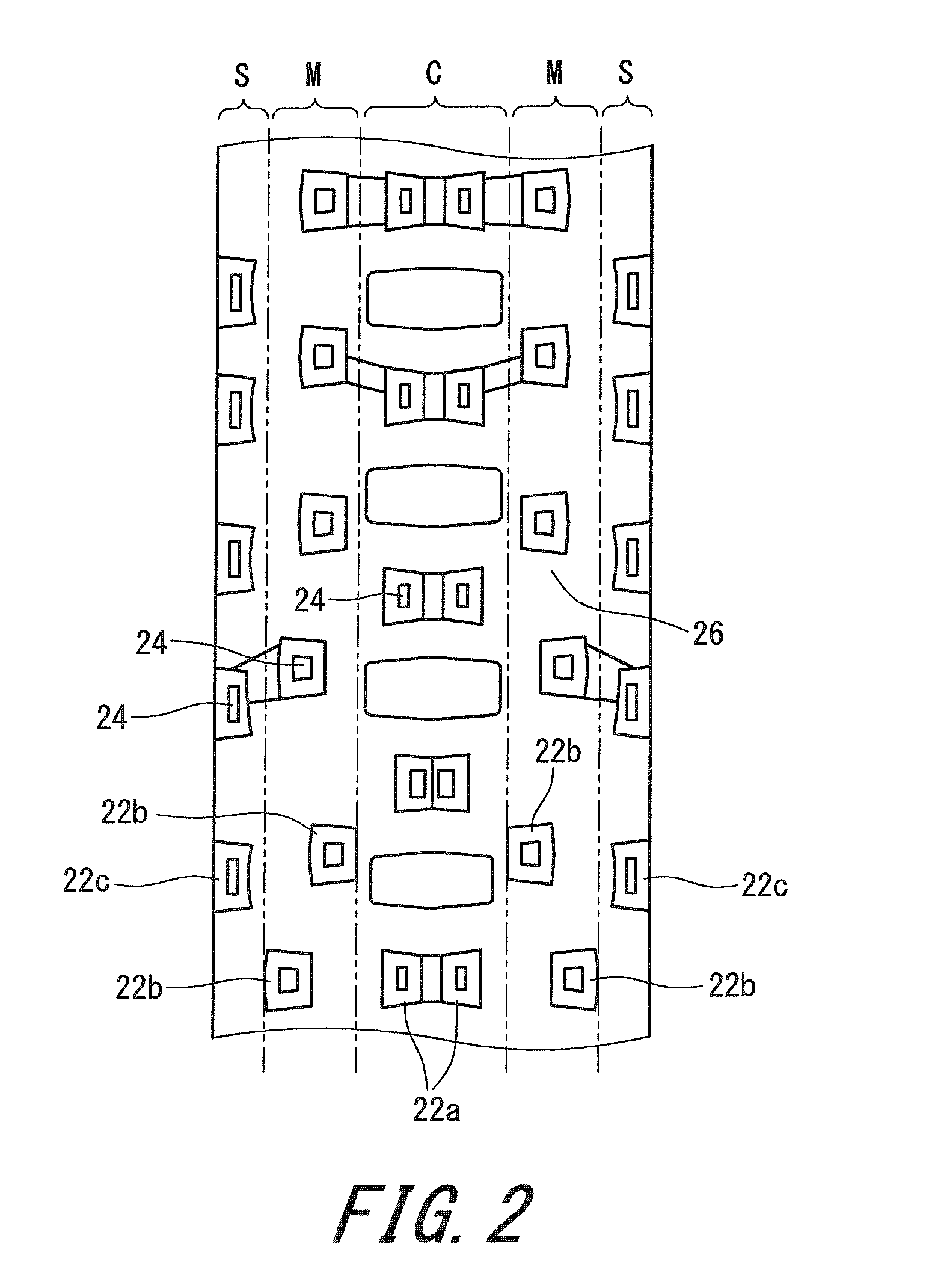Motorcycle tire for uneven terrain
a technology for uneven terrain and motorcycle tires, which is applied in the direction of off-road vehicle tires, cycles, transportation and packaging, etc. it can solve the problems of deteriorating handling stability under heavy load, tire having low stiffness is greatly deformed under heavy load, and tire has low stiffness, so as to achieve excellent impact absorption, the effect of sufficient deformation and enhanced stiffness of the axially outer portion
- Summary
- Abstract
- Description
- Claims
- Application Information
AI Technical Summary
Benefits of technology
Problems solved by technology
Method used
Image
Examples
example 1
[0060]A tire, of example 1, having the structure shown in FIG. 1 was obtained. The tire was of a tube type. The size of the tire was 80 / 100-21. Specifications of the tire are indicated in Table 1. The radius R1 of curvature of the arc C1 was 50 mm, and the radius R2 of curvature of the arcs C2 was 60 mm. Therefore, the ratio (R2 / R1) was 1.2. The length Lp from the equator plane to the point P of intersection of the arc C1 and each arc C2 was 24 mm. The length Lt, in the radial direction, from the equator plane to the end TE of the tread surface 16 was 49 mm. The height H was 70 mm. The complex elastic modulus E* of the rubber reinforcing layer was 3 MPa. The hardness Hs of the rubber reinforcing layer was 50. An angle of each cord of the first ply relative to the equator plane was 30°. An angle of each cord of the second ply relative to the equator plane was −30°.
reference example 1
[0063]A tire of reference example 1 was obtained as a tubeless tire having no rubber reinforcing layer.
examples 16 to 19
[0068]Tires of examples 16 to 19 were obtained in the same manner as for example 14 except that the maximum thickness T was as indicated in Table 6.
[0069][Evaluation of Impact Absorption and Handling Stability]
[0070]The sample tire was mounted to a front wheel (rim size: 1.60×21 inch) of a two-wheeled automotive vehicle (four-stroke cycle) which was dedicated to motocross racing and had an engine displacement of 450 cc, and the tire was inflated with air to an internal pressure of 80 kPa. A commercially available tire (size: 120 / 80-19) was mounted to a rear wheel (rim size: 2.15×19 inch), and the tire was inflated with air to an internal pressure of 80 kPa. This two-wheeled automotive vehicle was caused to run on a motocross course, and a sensory evaluation was made by a rider. The evaluation was made for impact absorption and handling stability. For handling stability, stability of landing in jump, controllability, and grip performance were evaluated. The results are indicated belo...
PUM
| Property | Measurement | Unit |
|---|---|---|
| thickness | aaaaa | aaaaa |
| thickness | aaaaa | aaaaa |
| angle | aaaaa | aaaaa |
Abstract
Description
Claims
Application Information
 Login to View More
Login to View More - R&D
- Intellectual Property
- Life Sciences
- Materials
- Tech Scout
- Unparalleled Data Quality
- Higher Quality Content
- 60% Fewer Hallucinations
Browse by: Latest US Patents, China's latest patents, Technical Efficacy Thesaurus, Application Domain, Technology Topic, Popular Technical Reports.
© 2025 PatSnap. All rights reserved.Legal|Privacy policy|Modern Slavery Act Transparency Statement|Sitemap|About US| Contact US: help@patsnap.com



